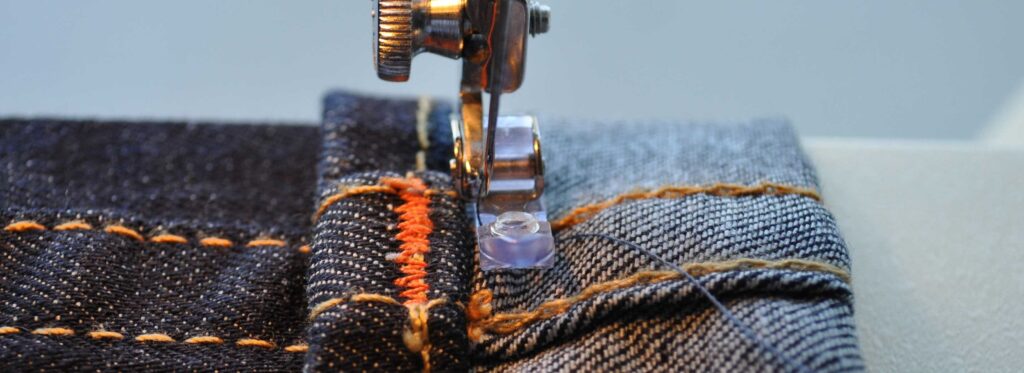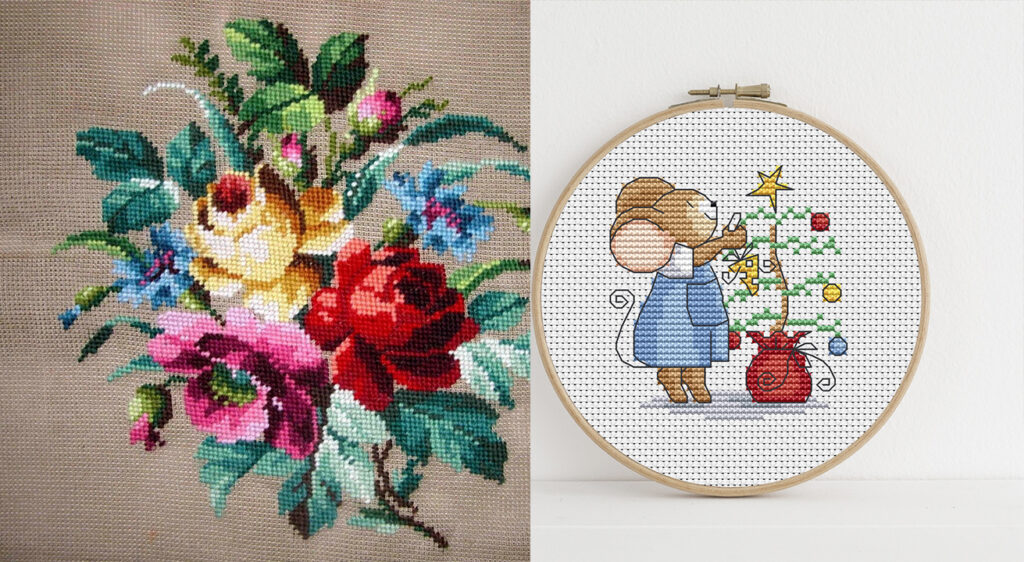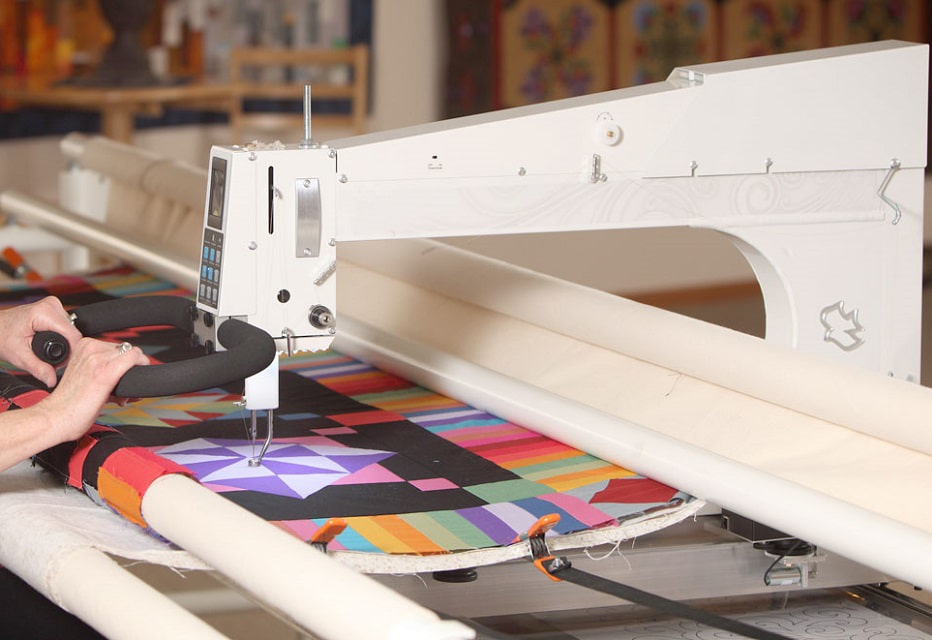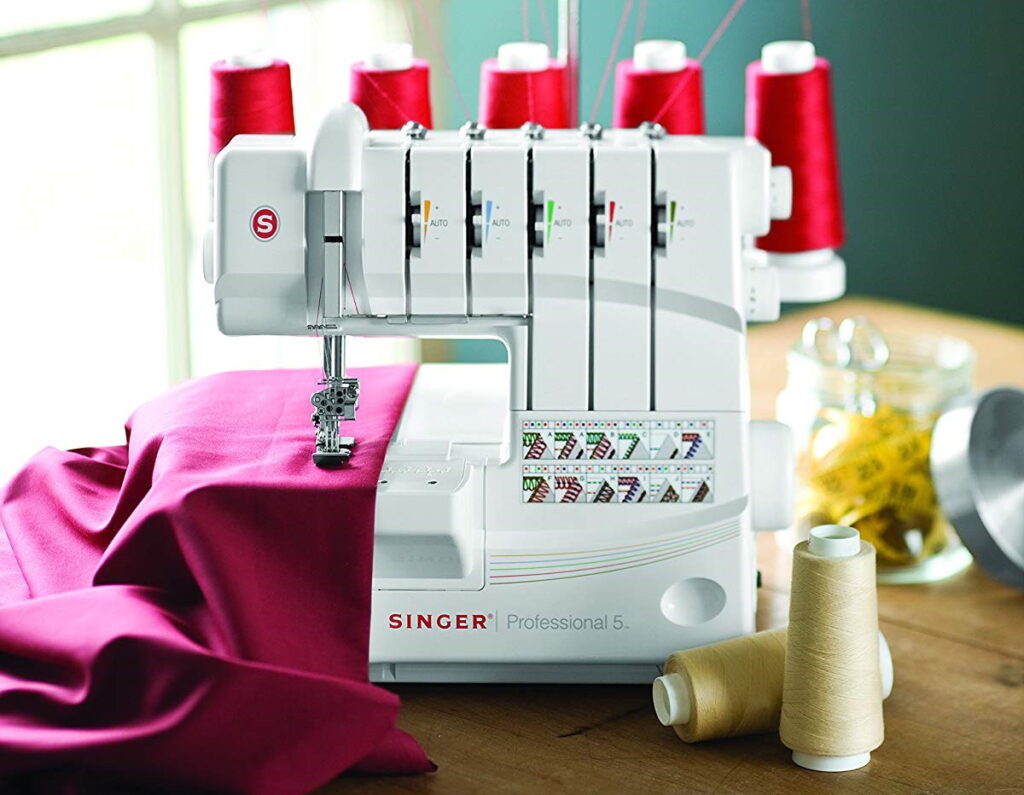Regularly cleaning and lubricating your sewing machine is an essential part of proper maintenance. When you remove the built-up lint and apply oil, your machine will run more quietly and smoothly. In our guide, you find useful tips on how to oil a sewing machine, including front-loading and top-loading devices. In addition, we explain how to clean it and answer some frequently asked questions about sewing machine maintenance. Expert tips will help you to extend the lifespan of your sewing machine and reduce repair bills.
These five simple tips on sewing machine maintenance are sure to give you positive results and pay off in the long run:
Some devices, for example, computerized sewing machines, are self-lubricated and don’t need to be oiled. The manual will describe the exact place where you can put the sewing machine oil, usually in the bobbin housing.
If you don’t have a manual, you may find it online on the manufacturer’s website. These tutorials typically don’t give you in-detailed instructions, but they contain important warnings. Pay particular attention to the information about what NOT to do with the sewing machine, and you will reduce your chances of breaking it.
If you have already read sewing machine cleaning manuals, you probably noticed diametrically opposite instructions about using compressed air. Some experienced sewers recommend it, and some forbid it, as canned air adds extra moisture that makes lint stickier. It also blows the lint into the inner mechanic parts. This may cause the machine to break, and result in a hefty repair bill.
We prefer to use a nylon brush instead of compressed air, and suggest brushing the inner parts of the machine carefully every time you change the bobbin.
For oiling and cleaning, you will need:
The maintenance takes about 15-20 minutes of your time at first, and about 5-10 minutes when you have learned how to do it quickly.
Let’s start with front-loading sewing machines. The lint usually accumulates beneath the needle plate and the feed dog, inside the housing and the bobbin case. So, first remove the bed to get the access to the housing. Then:
These stitches help you to remove extra oil from the bobbin case.
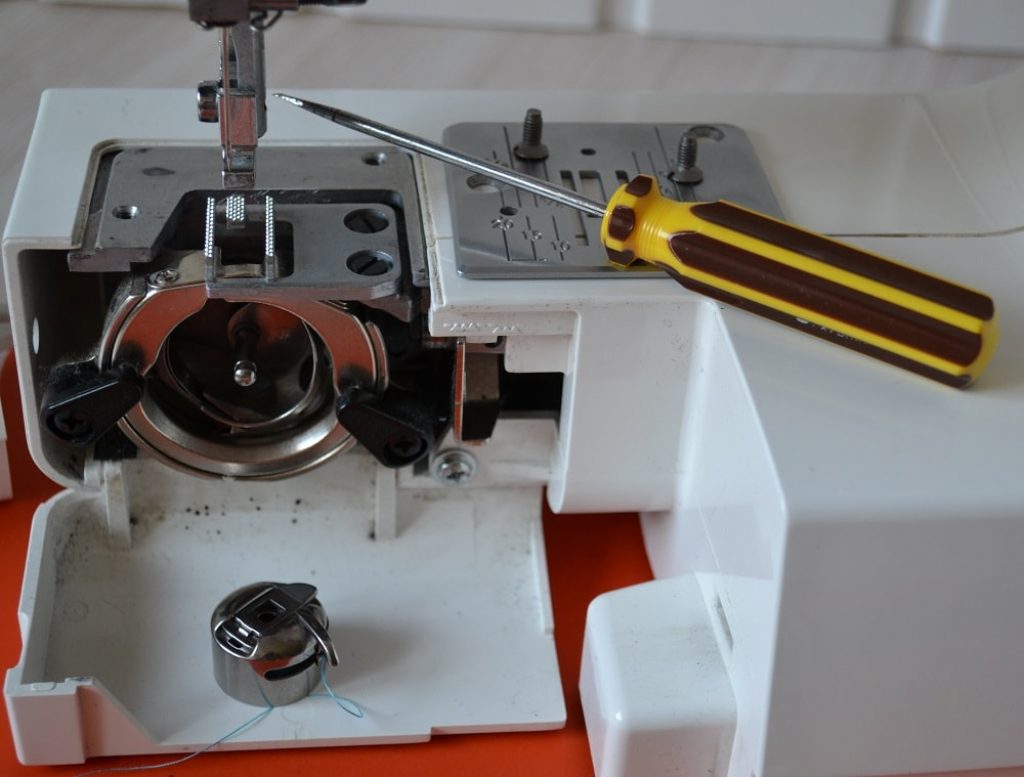
If you want to clean and oil a top-loading sewing machine quickly, you need to remove the feed dog and the needle using a special screwdriver plate. These screwdrivers come with the machine. If you don’t have them, you usually can use an ordinary screwdriver, or even a coin. Once the needle is removed, you may choose to change it to a brand-new one.
Next, follow this guide:
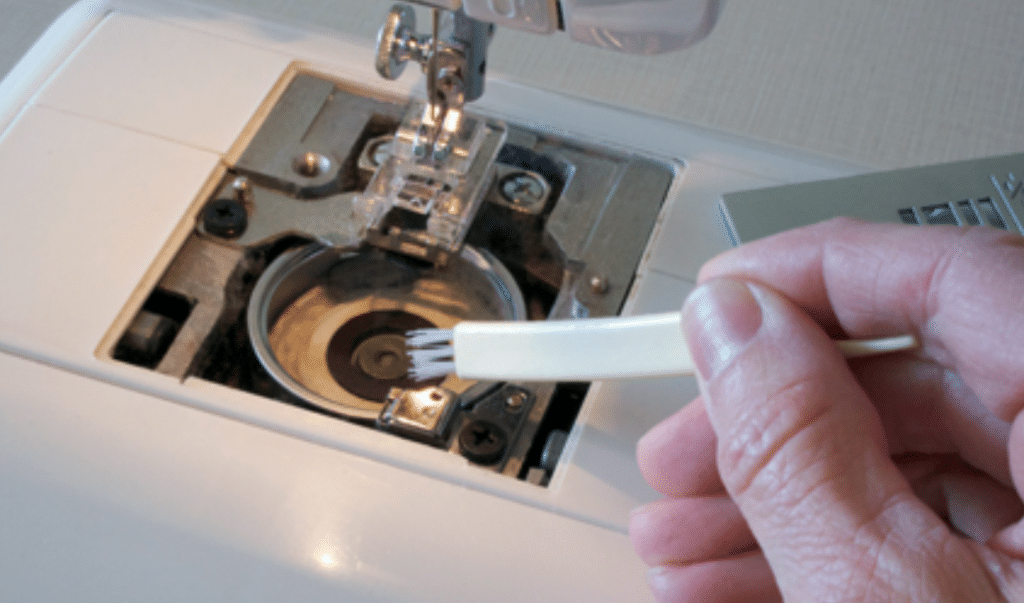
Below are the six most common questions that people ask about sewing machine cleaning and oiling. The answers will help you to avoid typical mistakes.
If you have no nylon brush, you can use other dust removers, but a synthetic brush is the best tool for the task.
A vacuum cleaner and hair dryer can make the inner parts of the machine dry, even if you oil them after the cleaning.
It is highly not recommended.
All electronic sewing machines, including computerized models, need to be switched off and unplugged before cleaning. Usually, computerized sewing machines do not need to be oiled. Extra liquid can harm the electronic plates, so be careful and read the instructional manual.
If you want to remove fluff from the needle threader, there is no better advice than to follow your manufacturer’s manual. To move down the needle threader, you need to push a button or select the icon in the menu (depends on the model of your machine). Then the system allows you to remove the feed dog and needle, enabling you to brush the threader with ease.
A portable sewing machine, especially if it is used without a cover, quickly becomes dirty both from the inside and outside. For outside cleaning, use a microfiber cloth or a sponge. You can wash the sewing machine body and head with a little bit of soap, but try to avoid extra water. Do not let water to drop on the needle plate and inside the machine. After cleaning, wipe everything dry.
Yes, if you don’t want to clean and oil your machine by yourself, you can take your device to your local sewing machine repair shop. Professionals will do the same thing that you would do at home. When choosing a shop, try to find one that is specialized in your sewing machine brand. For example, if you have a Brother sewing machine, go to the Brother repair center. In addition to the cleaning, the technicians can update the software or run diagnostic tests.


